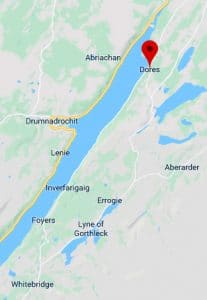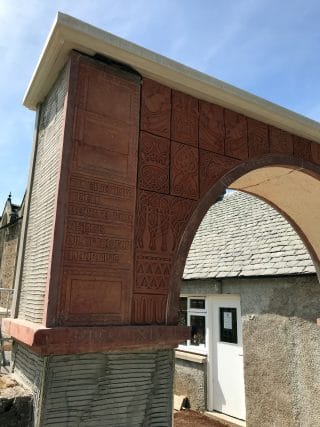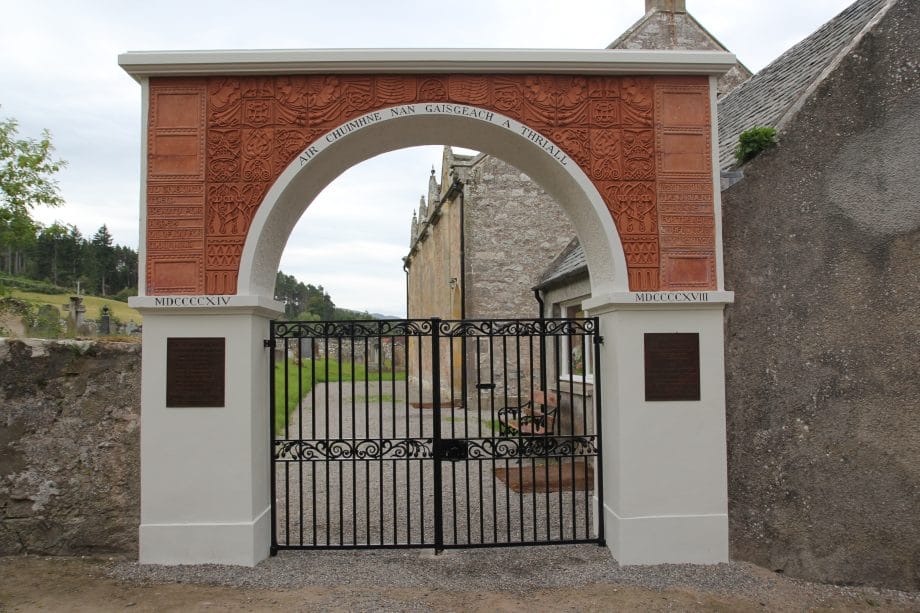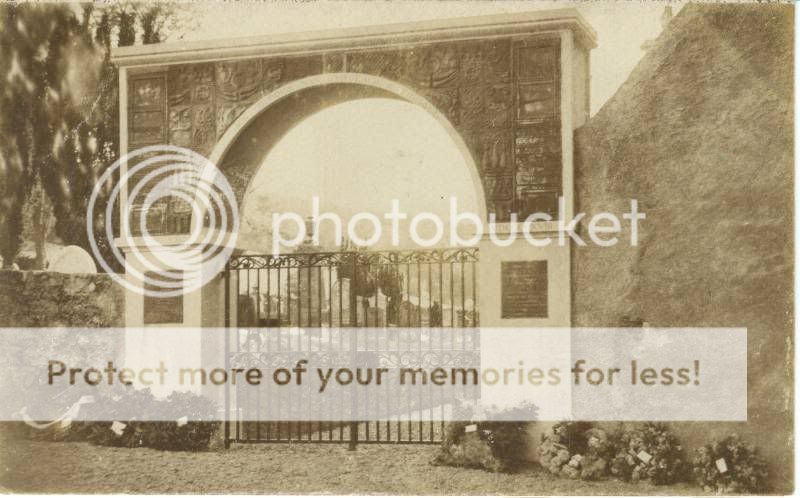Promain’s technical team recently made contact by HRI Munro Architecture. This was in regard to a war memorial restoration on the shore of Loch Ness. After receiving a grant by the Centenary Memorials Restoration Fund, the architects were looking to restore the design on the memorial. They therefore enlisted the help of Promain’s knowledgeable technical team to provide quality durable coatings within the renovation.
The War Memorial Restoration Project
| Memorial Style.: | Gate. |
| Location.: | Dores, Loch Ness, Inverness, Scotland. |
| Commemoration.: | First World War (1914-1918). |
| Designer.: | Louis Reid Deuchars, Mary Seton Fraser-Tytler. |
| WM Reference.: | 76042. |

In April 2018 funding of £28,130 from the Centenary Memorials Restoration Fund was announced to restore the memorial. The historic arch at the entrance to the parish church, was originally built in 1921. The memorial stands in the village at the entrance to the kirk.
‘Dores’ was the location of a small pottery established by the Surrey artist Mary Fraser-Tytler. Mary was the wife of artist G.F. Watts. The arched gateway to the kirk yard consists of two bronze panels. The panels are set into the face of the gateway. They display both names and dedications. The arch honours 18 highlanders who sadly lost their lives to World War I.
The construction is designed in the style of the Arts and Crafts movement which is synonymous with the village of Dores. Two of the upright facing panels were formed in ceramic, almost certainly to honour the history of the area. These panels were said to be similar to those you can find in Compton Chapel in Surrey. In conclusion these were probably the work of Mary Fraser-Tytler herself.
War Memorial Restoration
Originally covered in terracotta panels, the face of the arch had a Celtic and Art Noveau theme. Sadly however, the remaining panels on the structure had been damaged over time. This was mainly due to water penetration and frost. The architects enlisted the panels to be reconstructed by Hathern Terra Cotta – a division of Michelmersh Brick UK. The arch is a unique part of the history of the community and is therefore extremely worthy of preservation.
Promain’s War Memorial Restoration
Promain were tasked with finding a product that would be suitable for adding colour to the arch. This included the faded pigmented cement lettering as well as the banding across the arch and uprights. The exposed location of the site was one of the most important aspects when deciding which product to use. Furthermore, we also needed to find out whether the arch was polymer modified cement or otherwise.

The first point of call for Promain’s technical team was to contact the restoration specialists, Keim. Keim produce long lasting, environmentally friendly, mineral based paint systems. As a result, their systems have been used on many prestigious buildings. These include The White House, Windsor Castle and many other heritage buildings.
Keim provide a wide range of professional mineral paints, concrete and render systems and stone restorers all of which are available through Promain.co.uk. To view our full range of Keim products click here.
Keim’s War Memorial Restoration Specification
The first job was to discover whether or not the cement was polymer modified. If the cement is not polymer modified, a two coat application of Keim Royalan would be suitable. The initial coat should be diluted 20% with Keim Royalan Dilution to aid adhesion.
 If however, the cement is polymer modified, the contractor on site would need to test the absorbency of the substrate. If the client found Keim Mineral Paints are specified, an initial coat of Keim Royalan Grob followed by two coats of Keim Royalan would be required.
If however, the cement is polymer modified, the contractor on site would need to test the absorbency of the substrate. If the client found Keim Mineral Paints are specified, an initial coat of Keim Royalan Grob followed by two coats of Keim Royalan would be required.
In contrast this system is not ideal for lettering or fine work. However, for more intricate work, there is a more suitable Keim product available. Regularly specified for sign lettering, Keim recommend one coat of Keim Soldalit, followed by a one coat of Keim Royalan diluted 5% with Keim Royalan Dilution.
It is important to note however that these recommendations are for small decorative elements only. You should not use this system on larger areas.
How To Test A Substrates Porosity
A primer would only be required if the surface is highly absorbent. Typically, Promain would recommend water spray tests to be conducted to determine porosity. Using a spray bottle and clean cold water, you should spray the surface from a distance of 10-15cm. Following this you will then need to monitor how quickly the water is absorbs.
If water absorbs quickly, an initial coat of Keim Royalan Dilution would be advised onto the memorial. If the water sits on the surface for a short period, drips and absorbs slowly, then Keim Royalan Dilution may be applied but is not essential. On the other hand, if the water ‘beads’ on the surface and is not absorbed at all, Keim Mineral Paints may not be suitable in this instance. This could be due to an impenetrable element within the substrate which is likely to compromise the adhesion of the paint. If that were the case Promain would need to specify a different product.
The latter would indicate very high polymer modification. Surfaces such as this can be made suitable for decoration with Keim after abrading using sandpaper or Keim Lime Remover.
War Memorial Restoration Results
With the experiment complete, it was determined that the banding, stringers and support bases appeared cementitious. As a result, Promain decided that two coats of Keim Royalan (the first coat diluted 20% with Keim Royalan Dilution) would be suitable for the war memorial restoration.
War Memorial Restoration Conclusion
The project is set to complete in August 2018. In September the arch will be officially rededicated. If you are in the area, we recommend taking a visit to the church to pay your respects.





